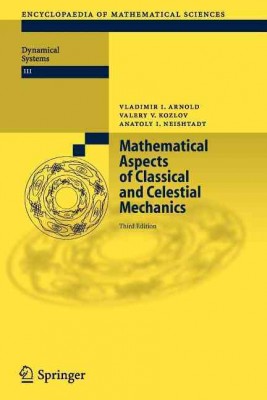| Mathematical Aspects of Classical and Celestial Mechanics Contributor(s): Arnold, Vladimir I. (Author), Khukhro, E. (Translator), Kozlov, Valery V. (Author) |
|
 |
ISBN: 364206647X ISBN-13: 9783642066474 Publisher: Springer OUR PRICE: $237.49 Product Type: Paperback - Other Formats Published: November 2010 |
| Additional Information |
| BISAC Categories: - Mathematics | Differential Equations - General - Mathematics | Mathematical Analysis - Science | Physics - Mathematical & Computational |
| Dewey: 531.015 |
| Series: Encyclopaedia of Mathematical Sciences |
| Physical Information: 1.08" H x 6.14" W x 9.21" (1.64 lbs) 505 pages |
| Descriptions, Reviews, Etc. |
| Publisher Description: In this book we describe the basic principles, problems, and methods of cl- sical mechanics. Our main attention is devoted to the mathematical side of the subject. Although the physical background of the models considered here and the applied aspects of the phenomena studied in this book are explored to a considerably lesser extent, we have tried to set forth ?rst and foremost the "working" apparatus of classical mechanics. This apparatus is contained mainly in Chapters 1, 3, 5, 6, and 8. Chapter 1 is devoted to the basic mathematical models of classical - chanics that are usually used for describing the motion of real mechanical systems. Special attention is given to the study of motion with constraints and to the problems of realization of constraints in dynamics. In Chapter 3 we discuss symmetry groups of mechanical systems and the corresponding conservation laws. We also expound various aspects of ord- reduction theory for systems with symmetries, which is often used in appli- tions. Chapter 4 is devoted to variational principles and methods of classical mechanics. They allow one, in particular, to obtain non-trivial results on the existence of periodic trajectories. Special attention is given to the case where the region of possible motion has a non-empty boundary. Applications of the variational methods to the theory of stability of motion are indicated. |